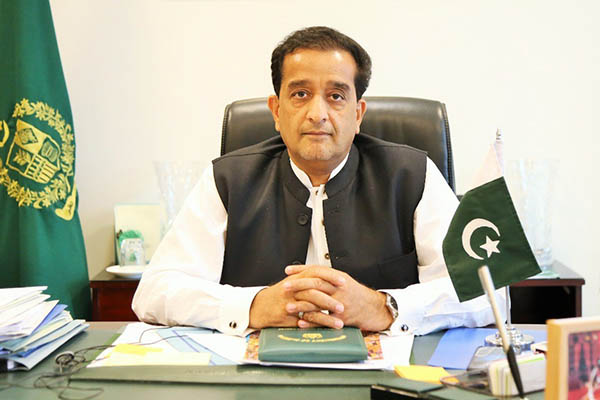
File photo
Special Assistant to the P.M. on Climate Change reiterates call for climate financing to help countries transition to renewable energy in address to global summit
Pakistan on Thursday informed the international community that it is aiming to boost electric vehicle adoption to 30 percent by 2030 as part of measures to combat climate change.
“We have committed ourselves to 60 percent clean energy and 30 percent electric vehicle transition by 2030,” Special Assistant to the P.M. on Climate Change Malik Amin Aslam told a U.S.-initiated Leaders’ Summit via video-link. “So, Pakistan is clearly doing more than its share for the climate change issue,” he added.
In his address, Aslam also urged developed nations to “do more” and fulfil their commitment to help the developing world transition from carbon-based to clean energy. “Now, the world needs to do more on climate finance. It needs to deliver climate finance for countries in energy transition, for countries who need to adapt, like Pakistan,” he said. “It needs to honor the commitment of $100 billion a year” to this cause, he added, referring to a pledge of 2009.
U.S. Secretary of Agriculture Tom Vilsack also invited Aslam to share with the world what steps a water-stressed country like Pakistan was taking to manage its resources. Noting that Pakistan was among the top 10 most vulnerable countries to the impact of climate change despite contributing less than 1 percent to global emissions, the special assistant noted that the frequency and intensity of natural disasters was on the rise.
“We face the Himalayan glaciers, which are melting in the north; the arid zones, which are getting heat waves like never before; cyclones in the south; and rising sea levels and floods in the plains,” he said. “Pakistan is really at the forefront of this climate disaster,” he said, adding that the “strong and resilient” nation was striving to overcome these issues. “We are planting 10 billion trees and restoring nearly 1 million hectares of forests, including the mangroves in the south,” he said. “Pakistan is the only country in the world with an increasing mangrove cover,” he added.
Global measures
The two-day virtual summit, which commenced on Earth Day (April 22), includes leaders of 40 countries and features pledges to curb emissions from the world’s major polluters—China, India, Russia, and the U.S. Hosted by the U.S., President Joe Biden promised to cut his country’s carbon emissions by 50 to 52 percent from their 2005 levels. Similarly, Japanese Prime Minister Yoshihide Suga raised his country’s target to cut emissions by 2030 from 26 to 46 percent.
Canadian Prime Minister Justin Trudeau pledged to reduce his country’s emissions from its 2005 levels by 40-45 percent by 2030—a jump over the previously pledge 30 percent. Chinese President Xi Jinping said Beijing expected to hit a peak of emissions before 2030 followed by achieving net zero emissions by 2060.
Russian President Vladimir Putin proposed preferential treatment for foreign investment in clean energy projects, but slammed U.S. for being the primary driver of the climate crisis. Indian Prime Minister Narendra Modi said he and Biden would launch the India-U.S. Climate and Clean Energy Agenda 2030 partnership to “help mobilize investments, demonstrate clean technologies, and enable green collaborations.”
The U.S. invited Pakistan to the summit earlier this week after having previously overlooked it despite its status as one of the most vulnerable countries to the effects of climate change. The summit’s aim, according to a letter sent to nations participating, was to bring together “the world’s major economies and other partners for an urgent and open dialogue on ways to strengthen our collective efforts to confront the climate crisis.”
